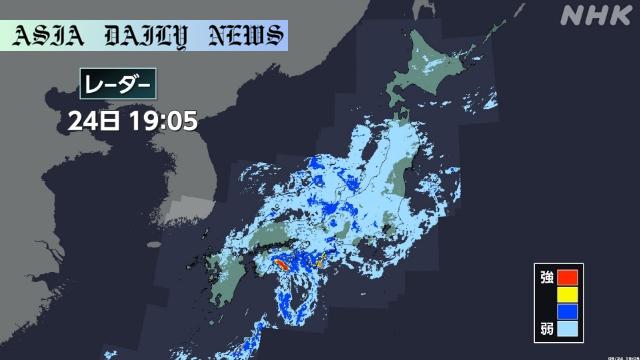Torrential Rain: Weather officials warn of heavy downpours along Japan’s Pacific side, urging high alert for landslides and flooding.

Torrential Rain and the Immediate Threat It Poses
The Japan Meteorological Agency has issued a severe warning about torrential rain expected to hit the Pacific coast of western and eastern Japan through Sunday morning. This weather system brings the potential for localized heavy rainfall exceeding 50 millimeters per hour, posing significant risks for those in the affected areas. The accompanying risks include landslides, flooding in low-lying regions, swollen rivers, and other catastrophic events such as lightning strikes and tornadoes. These conditions have already been evident, with Kagoshima Prefecture experiencing over 50 millimeters of rainfall within an hour on Saturday noon. Regions like Kochi Prefecture in Shikoku saw even heavier rainfall, recording 63 millimeters in Tosashimizu City in just one hour by late Saturday afternoon.
Understanding the Meteorological Causes
The current weather situation is the result of a low-pressure system coupled with a significant atmospheric front. This system originated in western Japan, bringing unstable atmospheric conditions as warm, humid air masses interact with the low-pressure system. Such interactions not only intensify rainfall but also create highly unstable weather patterns prone to severe localized events. This system is projected to traverse from western Japan to eastern regions throughout the weekend, necessitating vigilant monitoring and preventive measures across vulnerable areas.
Rainfall Projections and Affected Areas
Regions such as Kinki, Tokai, and Shikoku are expected to bear the brunt of this system’s impact. The rainfall projections for the next 24 hours indicate accumulations of up to 180 millimeters in Kinki and Tokai regions, and approximately 150 millimeters in the Shikoku region. Meanwhile, Kanto-Koshin is likely to experience rainfall of up to 120 millimeters. These numbers underline the severity of the situation, especially in areas where the landscape is prone to landslides or in urban zones susceptible to flooding.
Precautionary Measures to Mitigate Damage
Given the potential risks associated with such extreme weather, residents in affected areas have been urged to stay vigilant. Disaster management teams have prioritized issuing early warnings, evacuating people from high-risk zones, and ensuring that emergency response plans are in place. Local governments are also encouraging citizens to prepare adequately, including reviewing evacuation routes, stocking up on essentials, and staying updated via real-time weather updates from credible sources. Lightning, gusty winds, and potential tornadoes add another layer of urgency for precautionary actions.
Long-Term Implications of Unstable Weather
The torrential rain forecast for Japan’s Pacific coast is not merely a regional concern but also a reminder of the shifting climate patterns affecting the Asia-Pacific. Unstable weather conditions are increasingly common due to global climate change, exacerbating the region’s vulnerability to extreme events. Urban planning and disaster preparedness need a more comprehensive approach, including sustainable methods to mitigate flooding and counter the rising risks posed by such atmospheric disturbances. As Japan braces for yet another test of resilience, the importance of preparedness and adaptation becomes glaringly apparent.
Commentary
Importance of Staying Alert During Torrential Downpours
The warning of torrential rain across Japan’s Pacific coast highlights how natural calamities can disrupt lives and test a community’s resilience. Japan’s meteorological agency has displayed remarkable foresight in issuing early warnings to minimize the potential dangers associated with such extreme weather conditions. It’s incumbent upon citizens to heed these warnings and take appropriate action. From ensuring proper drainage systems at home to avoiding any unnecessary travel, individual preparedness plays a pivotal role in mitigating risks.
The Broader Impact of Climate Events
These weather disturbances are becoming a recurring phenomenon, not just in Japan but globally. The torrential rains remind us of the reality of climate change and the evolving challenges it brings. Governments, urban planners, and even private individuals need to adopt strategies to cope with such unpredictable weather. Investing in sustainable infrastructure, educating communities about disaster preparedness, and improving weather forecasting technologies are some of the steps that can help mitigate long-term risks. Collaboration between scientific agencies, government bodies, and local communities will be integral in achieving this.
A Call for Adaptation and Resilience
Japan, known for its meticulous disaster preparedness, serves as an example to many nations worldwide. However, even with advanced technology and infrastructure, natural disasters can wreak havoc if people are complacent. The challenges posed by torrential rain serve as a call for collective action. By staying proactive, informed, and united as a society, we can ensure that the impacts of such natural events are minimized. Disasters test us, but they also strengthen our resolve to improve and adapt for the future.


